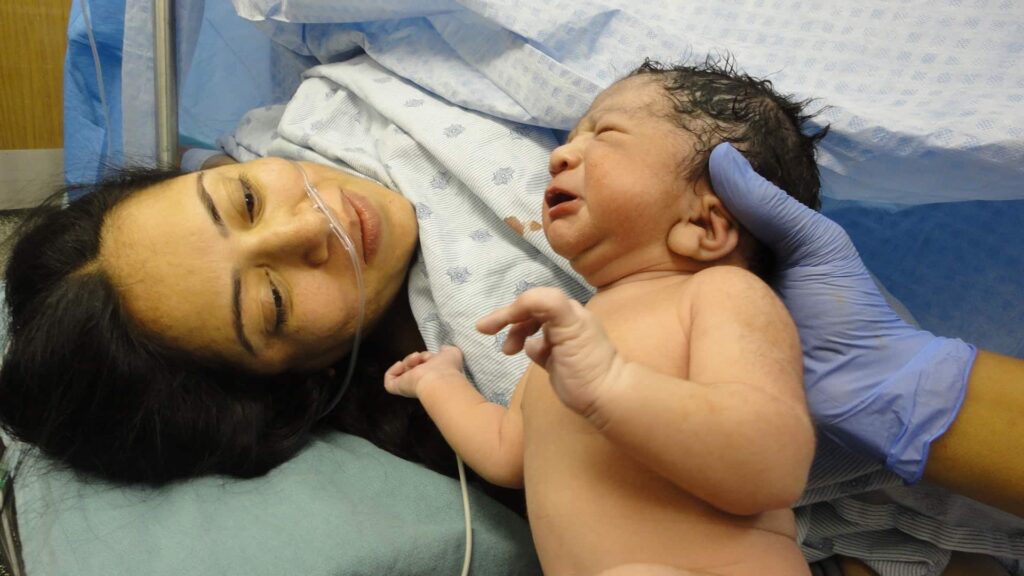 A study conducted by USA Today found that the maternal mortality rate in the United States is the highest in the developed world. According to the World Health Organization, maternal mortality rates have risen in the United States by 16.7 percent since 1990, even as they have plummeted elsewhere in the developed world, as American hospitals routinely miss symptoms that indicate serious, yet treatable maternal complications, including high blood pressure and hemorrhaging.
A study conducted by USA Today found that the maternal mortality rate in the United States is the highest in the developed world. According to the World Health Organization, maternal mortality rates have risen in the United States by 16.7 percent since 1990, even as they have plummeted elsewhere in the developed world, as American hospitals routinely miss symptoms that indicate serious, yet treatable maternal complications, including high blood pressure and hemorrhaging.
50,000 Mothers Suffer Complications, 700 Die Each Year
According to the Centers for Disease Control and Prevention (CDC), approximately 50,000 of the nearly four million women who give birth each year in the United States suffer serious complications during or after delivery, with around 700 mothers dying yearly. Estimates show that approximately half of the injuries could be reduced or eliminated and half of the deaths could be prevented with better medical care.
Common maternity complications include high blood pressure and excessive blood loss. Experts argue that doctors and nurses should administer medication within an hour of detecting dangerously high blood pressure in order to prevent strokes and that they should be weighing bloody pads to track blood loss so that any potential danger to the mother is recognized sooner.
Instead, the study found that fewer than half of maternity patients were treated in a prompt manner for high blood pressure, while many medical providers did not take steps to quantify blood loss. As a result, women have suffered organ shutdown, strokes, paralysis, future infertility, and death from preventable blood clots and untreated infections.
According to closed-door webinars conducted by the American Hospital Association, a trade group representing almost 5,000 hospitals and health networks, as many as 93 percent of women who bled to death during childbirth could have been saved if the hospitals had been tracking blood loss, while 60 percent of deaths from preeclampsia – a blood pressure disorder in pregnancy – would have been preventable if blood pressure had been controlled or related emergencies had been recognized.
Maternal Mortality Rate Rising Here, Declining Elsewhere
This failure to implement best safety practices in America’s hospitals on a consistent basis has caused the national maternal mortality rate to skyrocket – an increase of approximately 16.7 percent between 1990 and 2015 – just as other wealthy countries and many developing countries have seen their rates fall.
The comparison between maternal mortality in the United States and its developed counterparts can be startling. For example:
- Women in the United States are now over three times as likely as Canadians to die in the maternal period (defined by the CDC as the timespan from the start of pregnancy to one year after delivery or termination).
- American women are six times as likely to die during the maternal period as Scandinavian women.
- In Great Britain, mothers die from childbirth complications at one-third of the rate of women in the United States. In fact, the maternal mortality rate has fallen so sharply in Great Britain since 1990 that “a man is more likely to die while his partner is pregnant than she is.”
Best Practices Not Required
One notable exception to the upward trend in maternal mortality in the United States is California. Critics posit that California’s downward trajectory in maternal mortality is the result of safety experts and hospitals working together to implement practices that have been endorsed by many medical societies as “the gold standard of care.”
As far back as 2010, researchers in the state began promoting “toolkits” of childbirth safety practices to reduce injuries and death. The toolkits are made up of procedures, policies, and checklists of best practices to save mothers’ lives, and they have apparently yielded positive results: The maternal mortality rate in California has fallen by half since 1990.
Despite California’s record of success, however, hospitals in other states have been reluctant to adopt its safety practices – in large part because the regulators and the oversight groups who could require them to do so have not.
For example, the Centers for Medicare and Medicaid Services (CMS) does far less to protect mothers than it does to improve care for elderly Medicare patients. CMS requires hospitals to disclose information online about complication rates for knee and hip surgeries and whether heart attack patients receive care promptly, among other data, as a condition for receiving Medicare payments. But while CMS also helps to pay for almost half of the births in the United States through Medicaid, it has not implemented similar rules about documenting childbirth complications.
Meanwhile, the Joint Commission, a private accreditation organization that sets safety standards for thousands of hospitals nationwide, does not require hospitals to report how often healthcare providers fail to follow national guidelines for protecting mothers against childbirth dangers. A spokesperson for the group said it was still “studying safety practices,” even though many of these practices are already well known and have been implemented with wide success in California and other states over the past eights years.
In lieu of a government mandate, critics argue that it can take a decade or more for best safety practices to be widely adopted. And without a centralized health system, like the publicly funded national health care systems in Great Britain, Europe, and Canada, reform requires multiple entities to adopt change, including doctors, nurses, hospital administrators, insurance companies that pay for childbirth, and malpractice insurers who defend lawsuits filed against medical practitioners. Such a meeting of the minds seems unlikely in the near future.
“We’ve put a lot of credence in the idea of voluntary improvement and it’s just not enough,” said Helen Haskell, president of Mothers Against Medical Error, a nonprofit patient safety group in South Carolina. “You have to have transparency and you have to have regulation.”
<< BACK TO BLOG POSTS